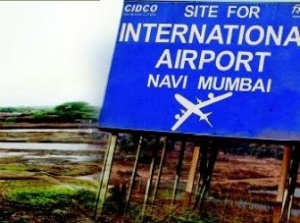Navi Mumbai airport given green light

Building work is set to begin on a second international airport in Mumbai following an agreement between the City Industrial & Development Corporation (CIDCO) and the Environment Ministry.
This being India, however, there are strings attached.
Backers of the airport will be forced to acquiesce to a number of strict environmental conditions in order to get plans for Navi Mumbai airport off the ground.
In total 32 conditions have been laid down, including provisions for the rehabilitation of some 3,000 families likely to be displaced by the project.
The new international airport will require land presently populated by seven villages and ten further settlements, the populations of which will all have to be relocated.
CIDCO leaders have also offered assurances the clearance of 615 hectares of mangrove cover will not contravene the Forest Conservation Act, 1980.
Under the terms of the agreement, a comprehensive master plan will be submitted to the Environment Ministry for surface drainage and flood protection.
ADVERTISEMENT
Local Objections
With environmental objections overcome, work will now begin on the urgently needed airport.
The existing Mumbai International Airport is reaching capacity, with a threefold increase in passenger numbers recorded over the past five years.
In response, the plans for Navi Mumbai are being rushed forward, with the location now opening as soon as 2014.
The government is presently hoping to start the tendering process by May 2011, and actual construction by December 2011.
Following the initial construction, the airport will increase in size, reaching a capacity of 60 million passengers by 2031.
However, even this deadline appears to be flexible, with civil aviation minister Praful Patel saying earlier this week the project could be accelerated.
“It is possible to expedite the project so as to reach the target of 60 million passengers by 2025 instead of 2031,” Patel said.
The 20-year construction period may be reduced.
“A 20-year period is too long for a capacity of 60 million passengers per annum. The state is open to compressing the construction period, but we need a go-ahead from the civil aviation department,” he concluded.

